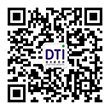Amazon CPC Compliance Testing Guide for Children’s Bracelets
Date:2025-07-22 10:52:33 Classification
:【question】 Visits:
A complete guide to CPC compliance testing for children's bracelets exported to Amazon in the United States, based on the latest regulatory requirements (as of July 2025) and practical points:
I. Core testing standards and projects
1. Mandatory regulations
- ASTM F2923-20 (Core Standard for Children's Jewelry Safety)
- CPSIA (Consumer Product Safety Improvement Act): Lead, cadmium, phthalate limits
- 16 CFR Part 1500.50-53 (Physical and Mechanical Properties Test)
2. Key testing content
Testing categories/specific requirements
Heavy metal limits: Lead ≤100ppm; Cadmium ≤75ppm; Mercury/Arsenic ≤Prohibited
Phthalates: 6 plasticizers (DEHP/DBP, etc.) are all ≤0.1% (1000ppm)
Physical safety:- Small parts test (to prevent choking risks, suitable for products under 3 years old)- Tensile test (necklace/bracelet withstands ≥15 pounds without breaking)- Magnet shedding test (does not fall off after abuse)
Labels and warnings: - Manufacturer information and batch number (tracking label) are permanently marked on the product
- Choking hazard warning is marked on the details page (applicable to small parts products)
II. CPC certification process
1. Confirm the scope of testing
- Applicable objects: decorative bracelets designed for children aged 12 and below (including beads, buckles, retractable chains, etc.).
2. Select a laboratory
- The institution must have CPSC accreditation qualifications (number can be checked on the official website), such as Dezewei Testing.
3. Inspection operation
- Sample requirements:
- Provide ≥3 independent samples (including packaging) for each main style and color;
- Multi-material bracelets (such as metal buckles + plastic beads) need to be split for testing.
- Synchronous submission of documents:
- Product ingredient list (including CAS number), process flow chart, packaging diagram (six-sided view).
4. Testing cycle and cost
- Regular cycle: 5-7 working days (plus an additional 30%~50% fee for urgent needs);
- Basic fee: ¥1000 (depending on the complexity of the material).
III. Amazon audit document list
Four core documents submitted to the seller's backend:
1. CPC certificate:
- Contains US importer information, product model, testing standards, production date and address.
2. Test report:
- Issued by a CPSC-approved laboratory, covering all ASTM F2923 and CPSIA items.
3. Product label photos:
- Clearly show the bracelet body and the tracking label on the packaging (including manufacturer name and batch number).
4. Warning statement on the detail page (if applicable):
- For example: *"WARNING: Choking hazard - small parts. Not for children under 3 yrs."* 。
4. High-risk risk points and avoidance suggestions
1. Material selection minefield
- ❌ Avoid using: cadmium-containing paint plating parts, PVC soft glue (phthalate risk), strong magnetic components (neodymium magnets).
- ✅ Alternatives: food-grade silicone beads, 304 stainless steel buckles, environmentally friendly water-based paint wooden beads.
2. Common reasons for Amazon returns
- The test report does not reflect the latest version of ASTM F2923-20 standard (revised in 2020);
- Multi-SKU bracelets only test basic models, not special color matching/accessories.
3. Violation penalties
- Products are forced to be removed from the shelves, and the inventory is moved to the Amazon destruction center;
- Maximum penalty: 4% of sales fine + EU RAPEX notification (affecting global customs clearance).




 Shen Gongwang Security: 44030602006947
Shen Gongwang Security: 44030602006947